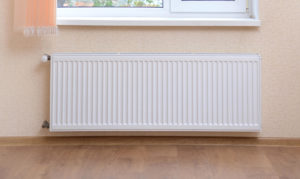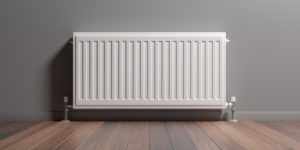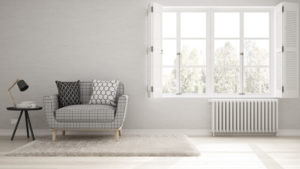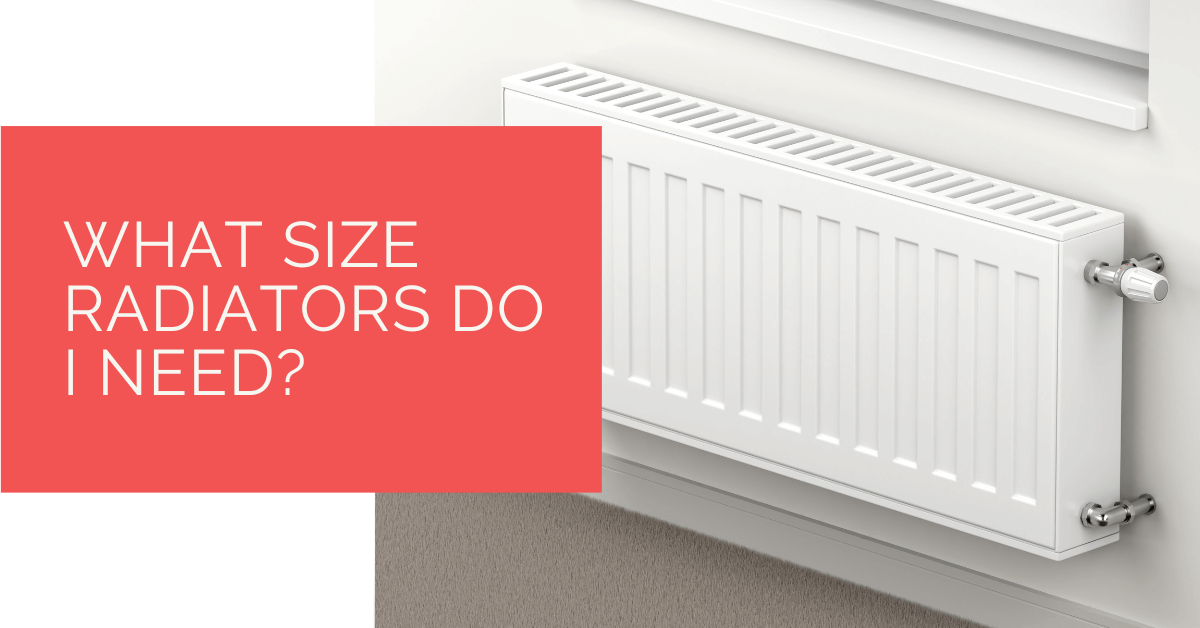Radiators are devices used to transmit heat from one area to another. They consist of highly conductive metal tubes or pipes through which hot water or steam flows. Once heated, the tubes radiate heat into the surrounding area. They’re widely used in homes and offices as a cost-effective heating option.
However, picking the appropriate radiator size may be difficult for beginners. So please read our guide before you buy a radiator so that you don’t get unsatisfactory results or overpay your energy bills.
Contents
Key Takeaways
- Choosing the right radiator size depends on room size, insulation type, location, and budget.
- Consider the room’s dimensions and insulation quality to determine the appropriate radiator size, avoiding inefficiency and excessive energy costs.
- Consider your location and budget constraints when selecting a radiator, as weather conditions and maintenance costs vary.
How Do I Pick The Right Radiator?
Radiators come in a variety of sizes to suit different heating needs and spaces. The size of a radiator is typically determined by the amount of heat it can produce, as well as its physical dimensions. While a radiator with a high heat output can heat a large space quickly, a radiator with a lower heat output will be more suitable for a smaller space.
You have to consider several factors before buying a radiator. Let’s list them for you.

Room
The first factor you should consider is the size of the room you want to install the radiator in. Radiators come in different sizes and wattages, and buying a smaller radiator may result in an unbalanced temperature. Differently, buying a radiator that’s too large may unnecessarily spike your energy bill.
Additionally, depending on your room’s orientation, it may get more sunlight than other areas in your home. In such cases, it may be better to get a smaller radiator to account for the ambient heat. Consider how many hours of sunlight your room gets, the number of windows it has, and its size.
It’s best to get the exact measurements of your room and calculate the floor area you’re dealing with. Some radiators can be mounted on the wall, while others remain on the floor. So, you must reserve enough space for it. There are several tools available online that can do this for you if you can’t get precise measurements.
For example, if your bedroom is 13m², your radiator will function at 1000 Watts or above to heat it efficiently. Alternatively, if your living room is 17m², you’ll need a radiator with at least 1670 Watts.
Insulation
There are two types of insulation to consider in the United Kingdom; poor and modern insulation.
Poor insulation can be caused by a variety of factors, such as insufficient insulation materials, gaps or air leaks in the building envelope, and outdated or ineffective insulation methods. If your home is outfitted with a poor insulation system, you may need a larger radiator to regulate the heat. This is often the case for older houses in the UK.
On the other hand, modern insulation materials and methods are designed to provide a high level of thermal resistance, reducing heat loss or gain in a building and improving energy efficiency. This type of insulation may include materials such as fibreglass, cellulose, and foam.
They’re also designed to be durable, long-lasting, and effective. Fortunately, most new buildings are outfitted with this type. As such, smaller radiators are often better suited to modern-insulated living spaces!
If you’re not aware of the type of insulation your house has, it’s best to consult a professional technician.

Location
Another factor to consider is where you live in the United Kingdom. The UK experiences odd weather patterns, where northern areas are generally cooler, wetter, and have more severe temperature changes than the south.
Additionally, urban and suburban areas produce and retain more heat than rural communities, which can be extremely cold during the winter. So make sure you buy a radiator that’ll last you through all kinds of temperature changes!
Radiator Type
There are a few radiator types that you should know of, but overall, the type that’s best for a particular space depends on the above factors.
- Convector radiators: They consist of a series of metal fins or tubes that are connected to a central heating system. Hot water or steam flows through the fins or tubes, heating the metal and radiating heat into the surrounding area. They’re typically mounted on the wall and are known for their efficient heat output and compact size.
- Panel radiators: They’re made of steel or aluminium and are available in a range of sizes and styles to suit different spaces and decor. They’re known for their low profile and their ability to blend in seamlessly with their surroundings. And they’re akin to a streamlined convector radiator.
- Column radiators: They’re a traditional type of radiator that consists of a series of vertical columns or tubes connected to a central heating system. Column radiators are typically made of cast iron or steel and are known for their durability and classic aesthetic.
While most traditional radiators work through a central heating system that often requires maintenance and servicing, there are options for electric radiators that have no moving parts and, in turn, break down less.

Budget
Finally, you must factor in your budget before buying a radiator. It’s important to spend what you can and, at the same time, buy one that’s efficient, effective, and lasts for a long time.
Note that traditional radiators that work through a central system might sometimes need maintenance to function. With long enough use, the boiler or the pipes may require cleaning and servicing.
On the other hand, electric radiators have no moving parts and are less prone to breakdowns but may be less energy-efficient in comparison. As such, we recommend you also factor in the cost of repairs and maintenance.
If you buy a radiator that’s too large for your needs, you may find yourself overpaying your electric bills. Similarly, buying a small radiator will inefficiently warm your room and be a waste of money.
Heat Pump Source: Reliable Heating and Cooling Solutions
At Heat Pump Source, we take pride in our unwavering commitment to serving the UK with top-tier HVAC solutions. From the efficiency of heat pumps and the cool relief of air conditioning to the warmth of boilers, radiators, and underfloor heating, our dedicated team is always at the forefront of innovation. We understand the unique needs of every household and business, and we strive to provide dependable health and cooling products and services that are tailored just for you. Ensuring your comfort and satisfaction is our utmost priority. Whether you have questions, need guidance, or require support, we’re always here to assist. Please don’t hesitate to contact us; we’re eager to be of service.
Conclusion
There are several factors you have to consider before you buy a radiator. Most importantly, you must get precise measurements for your room.
And remember to factor in your house insulation type and location. Brick houses in the UK often have poor insulation and may require larger radiators. Similarly, if you live in the countryside, you may need to buy a larger radiator.
Finally, make sure you don’t stretch your bank account thin and, at the same time, buy a product that guarantees quality and longevity.
About the Author
At Heat Pump Source, our articles are the product of a collaborative effort among a team of highly skilled HVAC experts. Our dedicated professionals, hailing from diverse backgrounds in heating, ventilation, air conditioning, and refrigeration, contribute their extensive knowledge and experience to every piece of content. This multidisciplinary approach ensures comprehensive coverage. Our commitment is to deliver authoritative, reliable, and tailored advice to meet the unique needs of every household and business across the UK.

